On walkability, part 2: Giving people something to look at
(This is part 2 in an irregular series of posts about walkability. For those of you just tuning in, part 1 is here.)
You don’t always hear about aesthetics being a factor in walkability; usually the discussion is focused on distances between places that people need to get to, and obstacles in the way of their walking to and fro. But I’ve thought for a long time now that the look of a walking route is important. A street with nothing but blank walls, or parking lots as far as the eye can see, makes for a dull, boring, dispiriting slog; a street with interesting buildings or bits of greenery or lots of shop windows or good views makes the same distance seem much less, because there’s always something interesting to look at. All the places I’ve lived in have illustrated this to greater or lesser degrees. Charlottesville has glimpses of the Blue Ridge Mountains everywhere you go; Ann Arbor has beautiful old houses*; Baltimore has fabulous bits of kitsch and wackiness (including things like Elvis shrines and painted window screens).
In Philly, there were some streets that I always found dull and highway-esque (especially certain stretches of Market Street in University City), but there were others that harbored weird and delightful surprises for anyone strolling by: a street of tiny houses, a building covered in mosaic tiles and mirrors…
…a Stikman or a mystery tile embedded in the street:
…an old bay window with a fancy vintage sign:
New London has its points of visual interest, too: there are the views of the Long Island Sound that you get when you head south from the Connecticut College campus…
…the riverfront, with docks and ferries and the Groton Monument across the river:
…the pretty old buildings along State Street (Bank Street, too):
But there are also plenty of places where the historic buildings give way to endless I-95 on- and off-ramps. It’s hard to get very excited about my walk home from work when the view of the Sound gives way to the view of, well, this:
Even with the sunset light on it, that’s a vista that I got tired of really fast. A big stretch of my homeward walk goes through gas-station-and-interstate territory, and I walk it with my headphones plugged in, tuning out the visuals as much as I can, because they’re just depressing. (Which is not to say that I walk along ignoring traffic. I’m not suicidal.) And there’s really no other way between campus and New London proper. Interestingly, there’s a group of people currently tackling this very issue. I missed their first open forum, but I’m hoping to go to the next one.
No one group of people is responsible for creating the kinds of visual details that make walking pleasant rather than boring; architects and designers and planners and business owners and arborists and home owners and street artists and a host of others all contribute. There’s no one way to go about making a place visually interesting, and band-aid solutions (a grassy median here, a mural there) aren’t going to make an ugly place all that much less ugly. But we can at least think about building environments that aren’t meant to be driven through at top speed and never looked at.
* That house in the photo was my favorite building in all of Ann Arbor, and I used to walk past it whenever I could because I loved it so much.


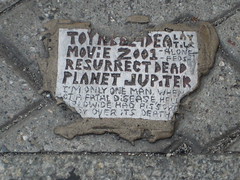
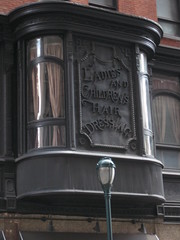

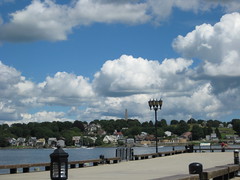
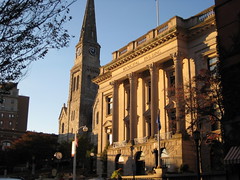
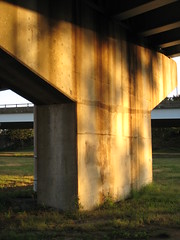
I used to live in Ann Arbor, too, and I loved walking in the neighborhood where that house is!
You lived there too? Aren’t those houses gorgeous? At the time I repined a lot about living in the Midwest, but in retrospect, there’s a lot that I miss about A2. Especially the extremely high bookstore density, and Zingerman’s. Ah, Zingerman’s…
Portland requires that tall buildings have shopfront with doors and windows on the ground floor. Does wonders for the walkability downtown.